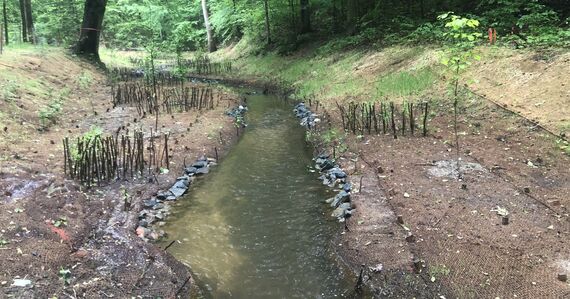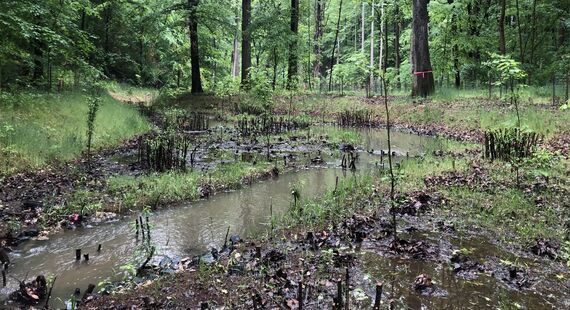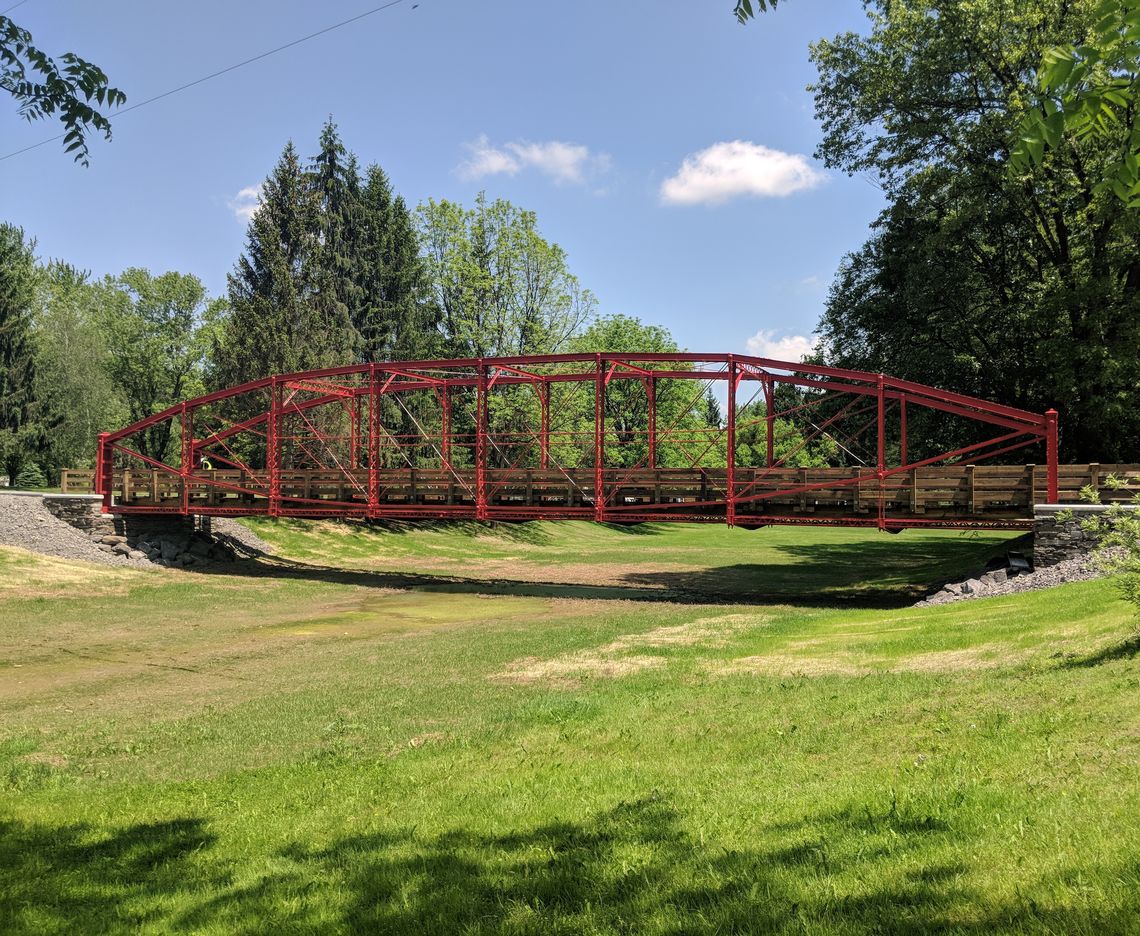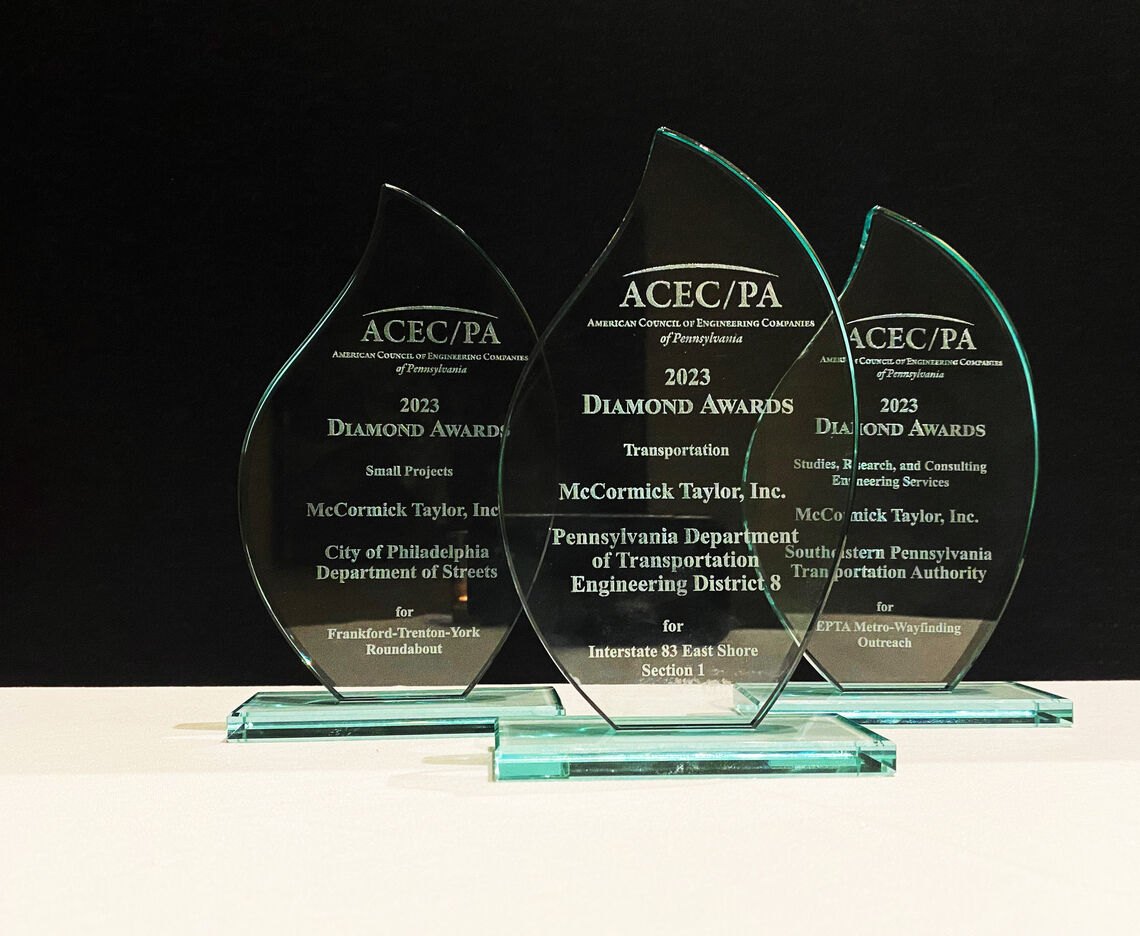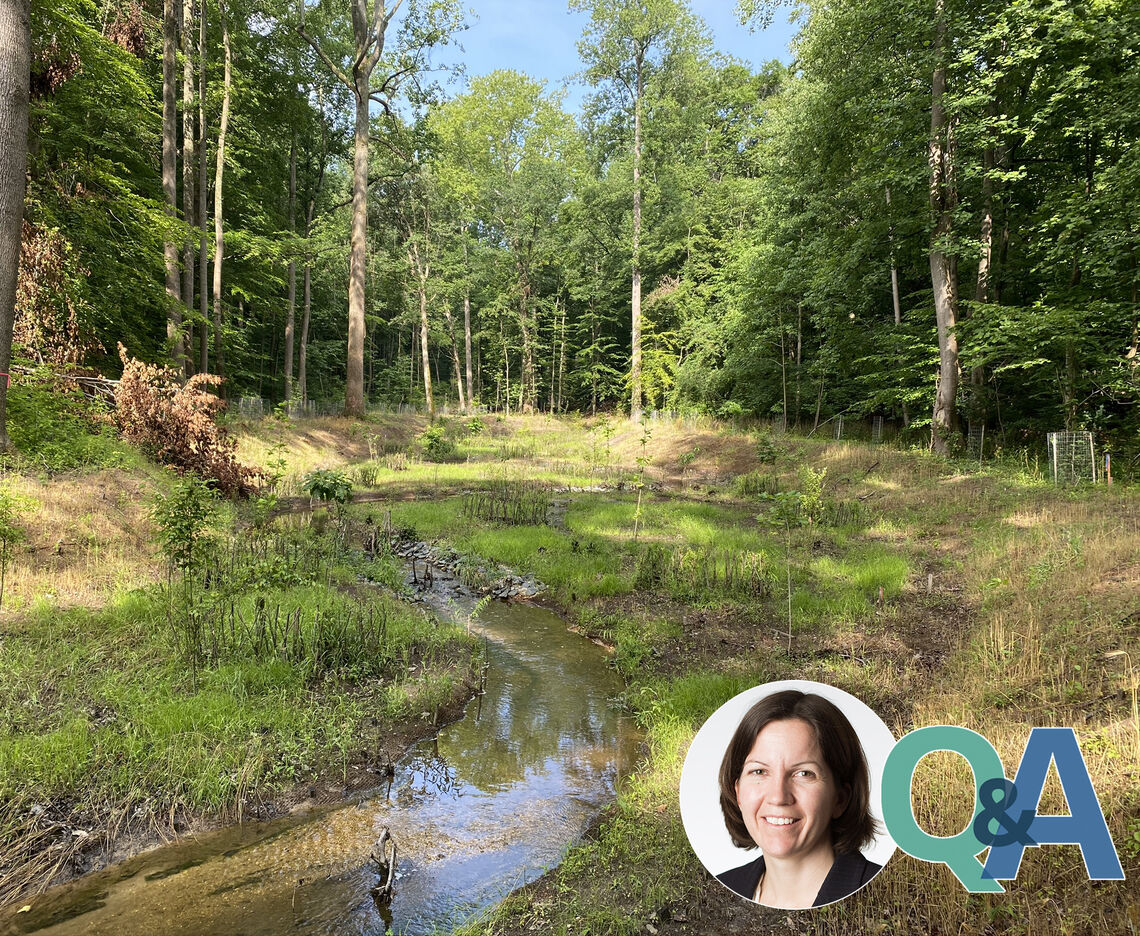
ASK A PROJECT MANAGER: TMDL STREAM RESTORATION AT ROSARYVILLE STATE PARK
We sat down with Lindsay Nicoll, who served as the Project Manager and as a designer on the TMDL Stream Restoration at Rosaryville State Park in Upper Marlboro, MD. McCormick Taylor’s talented multi-disciplinary team completed a comprehensive assessment and stream restoration design along 12,000 linear feet of tributaries to Charles Branch. The restoration design strategy focused on improving the stream’s physical and biological function by reconnecting floodplain access, reducing bank erosion and instream sedimentation, increasing hyporheic exchange, enhancing habitat conditions for benthic and fish communities, and minimizing natural resource impacts.
Tell us a little bit about what the project is and who it benefits.
The Maryland State Highway Administration (MDOT SHA) identified approximately 12,000 linear feet of stream channel for restoration improvements in pursuit of TMDL credit primarily within Rosaryville State Park. McCormick Taylor does a lot of work in more urban environments, so it was truly a pleasure to be in a park setting and to know that the public will have access to the finished product. Although, the best compliment would be for the public to never realize that we worked there. We want our sites to naturalize and blend into the existing site setting.
What about the project highlights McCormick Taylor’s talents?
We like solving problems, especially in ways that benefit our clients and the resources we work in. Our mantra is that "every project is a snowflake," and I think that represents a level of curiosity that helps us better see and understand what makes each site unique. We use science and engineering to gain an understanding of the existing conditions and the drivers for instability, and then we establish a site-specific restoration approach. For Rosaryville in particular, we developed new instream structures and headcut stabilization practices designed to fulfill site-specific needs and objectives.
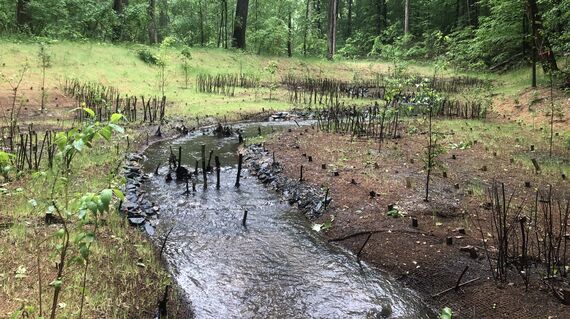
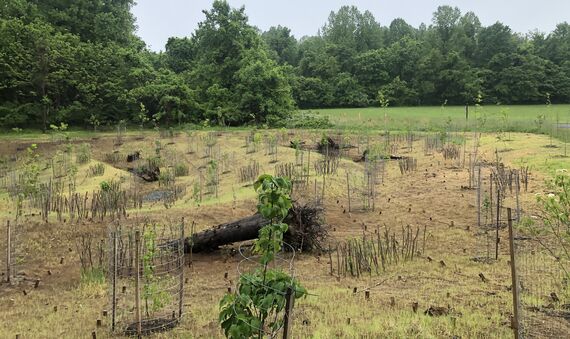
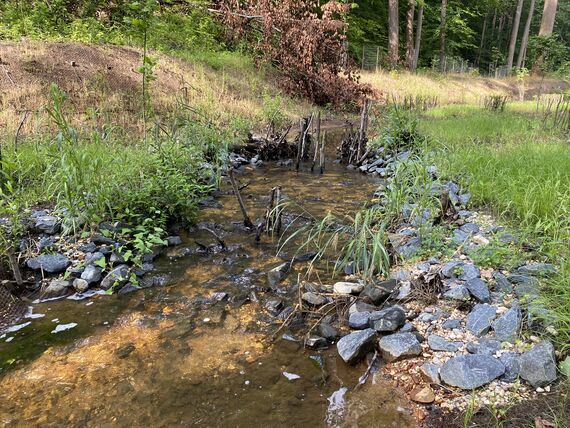
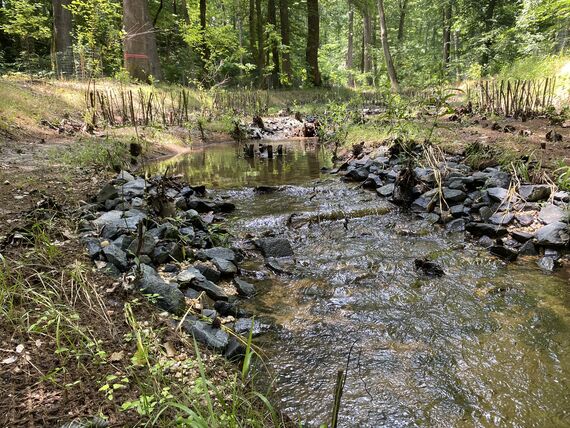
Did you come across any challenges or concerns while working on this project?
I’m sure there were many. One that I can think of was that, late in the design process, post-advertisement, an anticipated easement agreement nearly fell through. We supported SHA in developing an addendum parallel to the advertised package, in case the landowner agreement did fall through. We created a doppelganger of sorts for the plans and an estimate to truncate restoration limits at the property in question.
Our team worked diligently and with attention to detail in creating a "backup" modified design and plan set (254 sheets) under a tight timeframe. Thankfully the situation was resolved, and the project moved forward as advertised. It was the best-case outcome, but I was still proud of the effort we put in providing a viable backup plan to the client.
What was your favorite part of the project?
What first comes to mind is the teamwork. I enjoyed being part of a team effort to rally and get a solid product out the door. I felt fortunate to work within such a solid team. Also, I enjoyed having the ability to spend a "day at the office" hiking in a state park.
Did the project have any unique aspects?
Several large headcuts were present at the site, likely created as a result of historic land uses (edge of agricultural fields high in the drainage network). We developed new details and a design approach for Headcut Stabilization through the creation of a berm-sloped wetland sequence designed to provide water quality improvements through the storage of runoff from the upstream watershed and nutrient removal, as well as to ensure stable conditions along the reaches. Widths of wetland pool areas were maximized within site constraints to ensure maximum infiltration, drainage protection, and stormwater retention. Headcut Stabilization features were densely planted. Bioengineering materials were used to aid in runoff dispersion and infiltration. Vegetation cells were constructed to maximize diversity with some established close to groundwater elevations creating wetland pockets, while others will be upland cells creating a mosaic patchwork of microhabitats.
What has the feedback been like from the community?
Project construction was largely finished in late spring 2020. So far, we’ve received direct positive feedback from a number of folks at MDOT SHA. And as we understand it, the Maryland Department of Natural Resources, who owns and maintains the park, has provided positive feedback as well.
